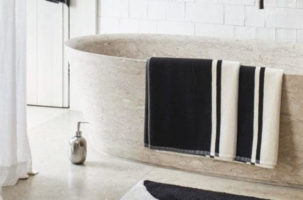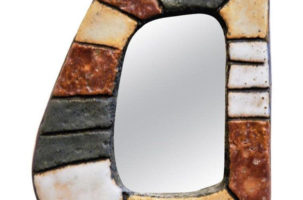Moving into a new home can be one of life’s great joys, but it can also be a time of uncertainty, especially when it comes to decorating. How do you make your space look its best while reflecting your personal sense of style? Do it well and you’ll end up with a comfortable, happy house. Do it poorly and you’ll end up with a hodge-podge of furniture, fabrics and paint colours that never congeal into a harmonious whole. With a little planning, and by following the same steps used by professional interior designers, you’ll have a much greater chance of success.
INTERIOR DECORATION: LAYING THE GROUNDWORK:
To reach the finish line, you first have to know where you’re going.
DON’T START IN THE FURNITURE STORE
Don’t go shopping in a panic, just because you have an empty home. Yes, you need a sofa. But if you pick the massive modular just because you like it in the shop, without taking measurements or thinking about the rest of the room, you’re stuck with it. The rest of the room will have to be built around that sofa, and if it’s too large for the space it will look forever awkward. Start in the room you’re looking to furnish, armed with a measuring tape and a notepad.

Start your decorating plans in the room you’re looking to furnish, armed with a measuring tape and a notepad. Image via Elle Decoration UK
KNOW YOUR MEASUREMENTS
Matching the scale of furniture to the scale of a room is critical. A deep sectional sofa can easily overpower a small room and svelte chairs can get lost in a wide-open loft. Before you start designing, measure the length and width of each room you intend to decorate, along with the ceiling height and elements that could get in the way – stairs, columns, and other obstructions. It’s also a good idea to measure window openings, along with the wall space below, above and to the sides of each one, to get ready for window coverings.
The first mistake most people make is that they buy things that are the wrong size – sofas that don’t fit in the room, sofas that don’t fit through doorways, tables that are too small, desks that are too big, nightstands that hang into the doorway. Carefully measuring your space can help avoid such problems.
CREATE A FLOORPLAN
Once you have the measurements of your room, it’s time to put them to use with a floor plan that gives you a bird’s eye view of the entire home.
Every job should start with a floor plan. You need to know the space.
One option is to draw a floor plan the old-fashioned way, with paper, a pencil and a ruler. However, most professional designers use drafting software like AutoCAD. In between are apps that aim to make it easy for homeowners to create simple floor plans (some even automate measurements with your smartphone’s camera, but double-check those numbers). Once you have the outline of the space, start experimenting with the placement of furniture, making sure that the footprint of each piece is scaled to match the size of the drawing.

Decide how you want to live. Go for designs that fit with your vision of yourself and your lifestyle. Image via Elle Decoration UK
DECIDE HOW YOU WANT TO LIVE
This is the tricky part, as there are no right or wrong answers. Rooms can be traditional or modern, formal or relaxed, and visually warm or cool. Go for designs that fit in your vision of yourself, and try to discern how you would like to live in a given space. What will you be doing? How many people live there? Are there children? The decoration of an interior for someone who regularly hosts large dinner parties, for instance, should be different for someone who eats at restaurants most nights.
The person who plans to host lavish fundraisers will have a different living room than the person who crashes in front of the TV most evenings.
COPY THE PROS
Look in design books and magazines, as well as at online resources like Instagram and Pinterest to sharpen your personal style. Figure out the style that you respond to most, and develop a dossier of favourite images.
Once you have images you like, study the details. See where pattern is used versus where solids are used, and where colour can be used successfully or not. It will also help inform everything from the type of furniture you might like to a potential strategy for window coverings.
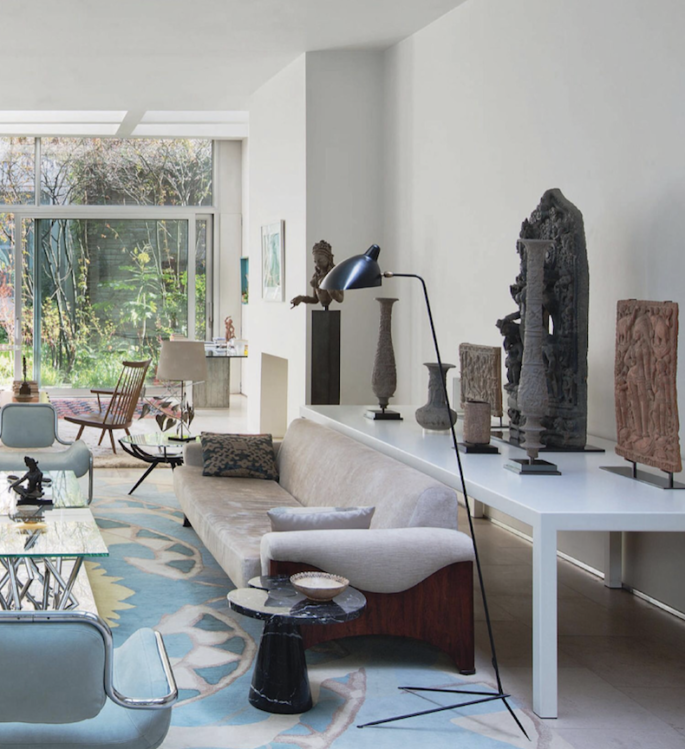
Develop a budget. If you splurge on an unexpectedly expensive chair, you’ll have less money available for the rest of the room. Image via UK Elle Decoration
TAPE IT OUT
To take ideas on a floor plan one step farther, use painter’s tape in the real space to outline where furniture will be placed on floors and against walls. Where will the rug be? Does it need to be cut? How far is the coffee table coming out? There’s something helpful about visualizing it in the space, and being able to walk around.
DEVELOP A BUDGET
There’s no getting around the maths: If you splurge on an unexpectedly expensive chair, you’ll have less money available for the rest of the house. You want to make sure you’re being strategic about how you spend your money. A budget gives you a roadmap for how to divide the costs of things between rooms.
You can still make an exception if you find a one-of-a-kind dining table, but in order to pay for it you have be thoughtful about where else you can cut back.
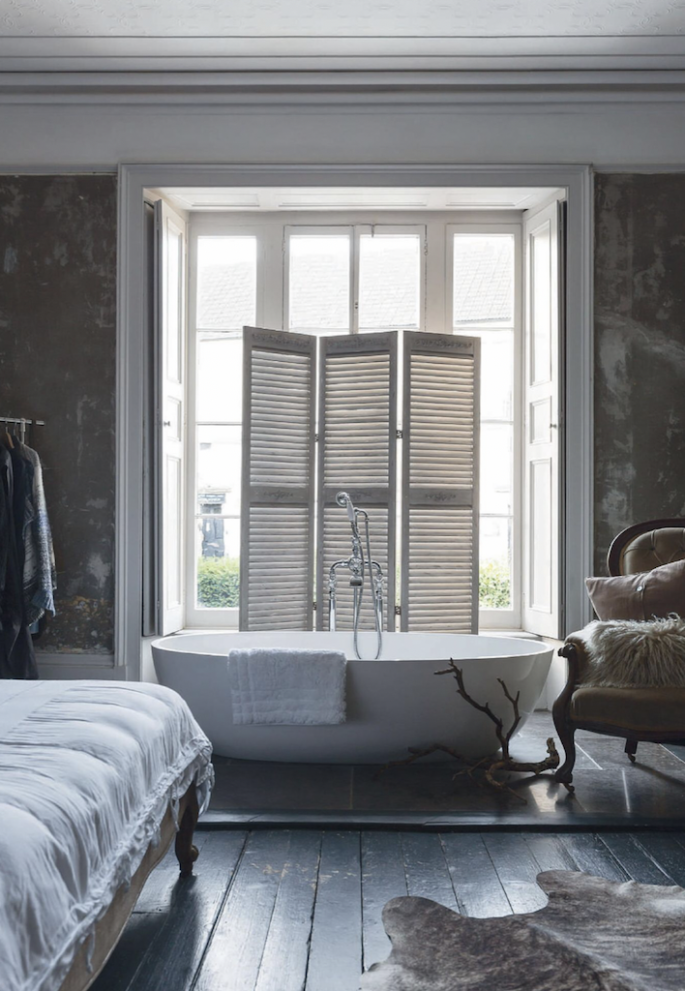
Plan your daily life: do any task around your house that can be done in one-minute. Fold a towel. Hang a coat. Puff a cushion. It will give you a short boost of happiness, and bring instant order into your home. Image via UK Elle Decoration
PLAN THE PHASES
Finishing drywall, refinishing hardwood floors and painting ceilings is all messy work. If at all possible, it’s better to have this type of work completed before moving any furniture or accessories into the space.
If it can’t be avoided, seal large pieces of furniture under plastic drop cloths, and accessories in boxes with tape to protect them.
6 WAYS TO STAY ORGANISED WHEN YOU MOVE
As with so many things, decisions, interruptions, and shifts in attention, going on when you move into a new house – here’s a few small things that can make a big difference.
PLAN YOUR DAILY LIFE
Want to have a good day? Try making the bed first. Because when you accomplish one thing early in the day, you’ll be motivated to achieve more. The morning ritual of pulling sheets at a 45-degree angle and tucking them tightly can be an anchor point for your day; it will give you a small sense of pride, and encourage you to do another task and another. Keep your space at home tidy and free from clutter, and be honest with yourself about what you really need.
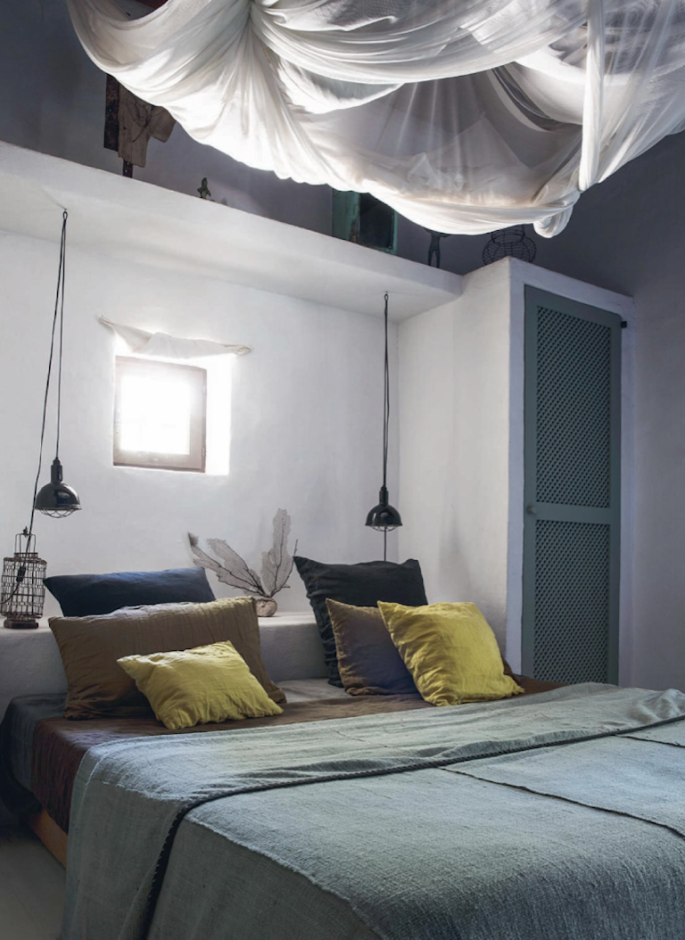
Want to have a good day? Try making the bed first. Image via UK Elle Decoration
THE 1-MINUTE RULE
Do any task around your new pad, that can be finished in one-minute:
- Hang up a coat.
- Puff your pillows.
- Tidy up your magazines, and books in neat stacks.
- Read a letter, and toss it.
- Straighten a table, or rug.
- File a paper.
- Put dishes in the dishwasher.
- Chuck old fruit and flowers.
If you do nothing else, incorporate the one-minute rule into your life. It will give you a short boost of happiness after you accomplish so much in a short time plus a sense of order — and as a bonus, you will end up with a cleaner house, which will also make you happy.



